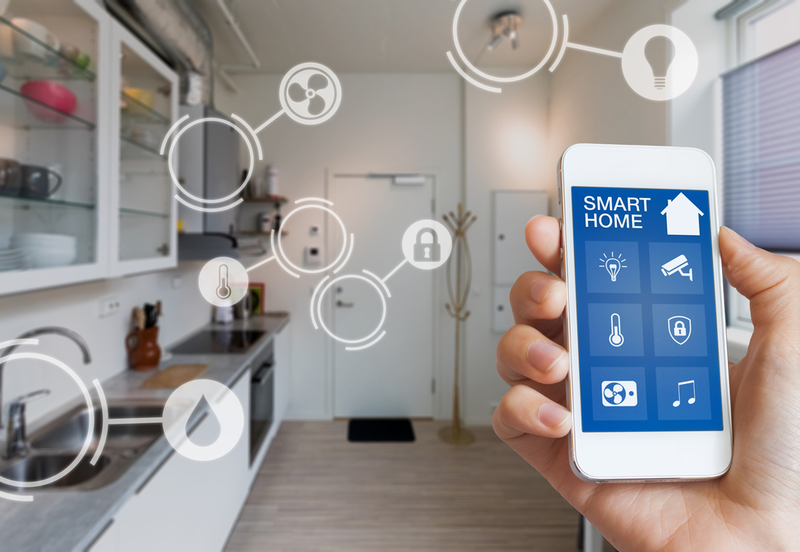4 Smart Technology Devices To Support Aging in Place
For older adults contemplating aging in place, the saying “home is where the heart is” rings especially true. According to an AARP survey, “nearly 90 percent of people over age 65 want to stay in their home for as long as possible.”
However, many are also aware that aging in place is not a decision to take lightly. With age comes an assortment of medical conditions that make independent living challenging, including balance loss, reduced vision, and increased risk for fall. Without proper support networks and home modifications designed to accommodate health concerns, aging in place can even be dangerous for seniors.
Luckily, with today’s technological advancements, smart-home devices can serve functions essential to independent living. While they cannot account for every challenge that accompanies aging in place, they can help assist with daily tasks, ensure safety, and provide peace of mind for caregivers and loved ones who are away from home. Most smart-devices can also be activated remotely with a smartphone, which can help limit unnecessary movements around the home that can lead to injury. If you or a loved one is considering aging in place, here are 4 smart-devices that can help facilitate the transition to a safer living space:
Smart Home Security System
To help ensure the safety of you or a loved one aging in place — both inside and outside the home — consider installing a smart-device security system. With the advent of Mesh WiFi, a network that extends Wi-Fi coverage to every corner of a home, smart-home security systems provide an interconnected network of alarms, sensors, and surveillance tools that allow for safer and more independent living. Such smart security systems may include devices such as a doorbell camera, a smart lock, and live-monitoring cameras. Unlike traditional security systems, smart versions can be installed without professional help and do not come with long and expensive contracts.
Most smart security systems are paired with a companion smartphone app that can be accessed by caregivers and family alike. Any breaches in security will be reported via mobile notification, which allows for accessible and around-the-clock protection. For such systems, the NYTimes recommends adding a professional monitoring plan, which allows a live person from a call center to alert you, your loved one, or the police or fire department in case of emergency.
Smart Door or Window Sensors
Smart security systems can also serve safety and practical purposes for seniors who experience memory loss. According to the National Center for Biotechnology Information, “about 40% of people aged 65 or older have age associated memory impairment,” highlighting one of the biggest concerns seniors can face when aging in place.
As part of your overall smart security plan, contact sensors can be set up around an elderly person’s home to alert them or those with app access when certain doors or windows have been left open. For seniors living with medical conditions such as Alzheimer’s disease that make them more prone to wandering, these door sensors can be potentially life-saving, as wandering may result in missing medication, contracting hypothermia, and more. Not only will smart contact sensors ensure the safety of the senior person involved, but they can also help alleviate stress for caregivers and family members who can monitor locked and unlocked doors via the remote smartphone app.
Smart Smoke and Carbon-Monoxide Detectors
While it is a given that all homes should have functional smoke detectors, it is important to consider the challenges a senior living-in-place may experience during a fire emergency, such as decreased movement and hearing loss that can affect if, or when, they detect an alarm.
To minimize the risk of these dangers, consider installing a smart smoke detector that can connect to your home’s Wi-Fi and other smart devices. Unlike a traditional smoke detector, smart detectors can send alerts in a number of accessible ways, including via smartphone notification, audible sirens, or voice alerts from connected smart speakers. Many smart smoke detectors can also specify what room the fire or smoke was detected in, which can allow for more efficient movement to safety. Likewise, their voice command capability can help reduce unnecessary or haphazardous movement that result in injury, such as climbing tall surfaces to turn off smoke alarms, or reaching a phone to call 911.
Smart Medical Alert Systems
To ensure that 911 or a healthcare professional can be reached during an emergency, consider using a medical alert system. These devices, which typically come in wearable electronic forms such as bracelets or watches, only require the press of a button to alert a dispatcher or emergency contact of danger. Whether you live alone, with a loved one, or with a caregiver, medical alert systems can help you remain independent in your home without fear that help cannot be reached.
When considering what medical alert system is best for you, take into account your preferences, living situation, and pre-existing medical conditions. To start, consider whether you want a monitored or unmonitored system. For a monitored device, the call button connects you directly with an emergency call center that is available 24/7. (Monitored devices usually come with a monthly fee.) Conversely, unmonitored systems are not connected to a call center, but can be linked to an emergency contact or 911.
In addition, some medical alert systems use a wireless signal as opposed to a landline signal, which means that the device only works within a home. These devices are ideal for older people who enjoy staying outdoors, as sudden accidents or injuries can occur at any time, especially when engaging in physical activity or exercise.
If you or a loved one is considering aging in place, visit our Aging in Place tool that connects users with a comprehensive marketplace of services and benefits in your community. Click here to learn more.














